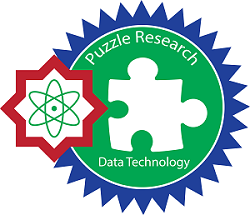Using Bayesian Ridge Algorithm to Predict Effectiveness of Body Fat Measurement
DOI:
https://doi.org/10.57152/malcom.v3i1.717Keywords:
body fat, bayesian ridge algorithm, body mass index, linear regressionAbstract
Body fat is an important aspect in understanding and managing one's physical condition. Accurate measurement of body fat percentage is essential to help accurately plan future health plans. Currently, the method of measuring body fat is still traditional and quite difficult, so what is needed is a more effective method. The Bayesian Ridge Algorithm is a linear regression technique that uses Bayesian inference to estimate the parameters of the model. In this study, it was used to predict the effectiveness of measuring body fat, which is a method often used to evaluate a person's overall health and physical condition. This algorithm takes into account factors such as age, gender, and body mass index (BMI) to make predictions about a person's body fat percentage. The results from this study can be used to improve the accuracy of body fat measurement and help individuals better understand and manage their health. The results of this study indicate that the model has very high accuracy (more than 99%).
Downloads
References
J. A. Shepherd, B. K. Ng, M. Sommer, and S. B. Heymsfield, “Body composition by DXA,” Bone, vol. 104, pp. 101–105, Nov. 2017, doi: 10.1016/j.bone.2017.06.010.
S. D. Permai and H. Tanty, “Linear regression model using Bayesian approach for energy performance of Residential Building,” Procedia Computer Science, vol. 135, pp. 671–677, 2018. doi:10.1016/j.procs.2018.08.219
scikit learn, “Linear Models,” scikit, https://scikit-learn.org/stable/modules/linear_model.html (accessed Jun. 11, 2023).
S. Patnaik, X.-S. Yang, and I. K. Sethi, Advances in Machine Learning and Computational Intelligence: Proceedings of ICMLCI 2019. Singapore: Springer, 2021.
K. P. Burnham, D. R. Anderson, and K. P. Burnham, Model Selection and Multimodel Inference: A Practical Information-Theoretic Approach. New York: Springer, 2010.
A. L. Samuel, "Some Studies in Machine Learning Using the Game of Checkers," in IBM Journal of Research and Development, vol. 3, no. 3, pp. 210-229, July 1959, doi: 10.1147/rd.33.0210.
K. P. Murphy, Machine Learning: A Probabilistic Perspective. MIT press, 2012.
M. H. Kutner, C. J. Nachtsheim, J. Neter, W. Li et al., Applied linear statistical models. McGraw-Hill Irwin New York, 2005, vol. 5.
M. E. Tipping, “Sparse Bayesian learning and the relevance vector machine,” Journal of Machine Learning Research, vol. 1, no. Jun, pp. 211–244, 2001.
W.N. van WieringenLecture Notes on Ridge RegressionarXiv preprint arXiv:150909169 (2015)
A. Ge?ron, Hands-on Machine Learning with Scikit-Learn, Keras and Tensorflow: Concepts, Tools, and Techniques to Build Intelligent Systems. Sebastapol, CA: O’Reilly, 2023.
A. G. Assaf, M. Tsionas, and A. Tasiopoulos, “Diagnosing and correcting the effects of multicollinearity: Bayesian implications of ridge regression,” Tourism Management, vol. 71, pp. 1–8, Apr. 2019, doi: https://doi.org/10.1016/j.tourman.2018.09.008.
D. Gianola, “Priors in Whole-Genome Regression: The Bayesian Alphabet Returns,” Genetics, vol. 194, no. 3, pp. 573–596, May 2013, doi: https://doi.org/10.1534/genetics.113.151753.
S. Le-qu, “Anomaly Detection Based on Sparse Bayesian Regression,” Computer and Modernization, Jan.2015.
A. A. Suryanto, “PENERAPAN METODE MEAN ABSOLUTE ERROR (MEA) DALAM ALGORITMA REGRESI LINEAR UNTUK PREDIKSI PRODUKSI PADI,” SAINTEKBU, vol. 11, no. 1, pp. 78–83, Feb. 2019, doi: https://doi.org/10.32764/saintekbu.v11i1.298.
Downloads
Published
How to Cite
Issue
Section
License
Copyright © by Author; Published by Institut Riset dan Publikasi Indonesia (IRPI)
This Indonesian Journal of Machine Learning and Computer Science is licensed under a Creative Commons Attribution-ShareAlike 4.0 International License.




















